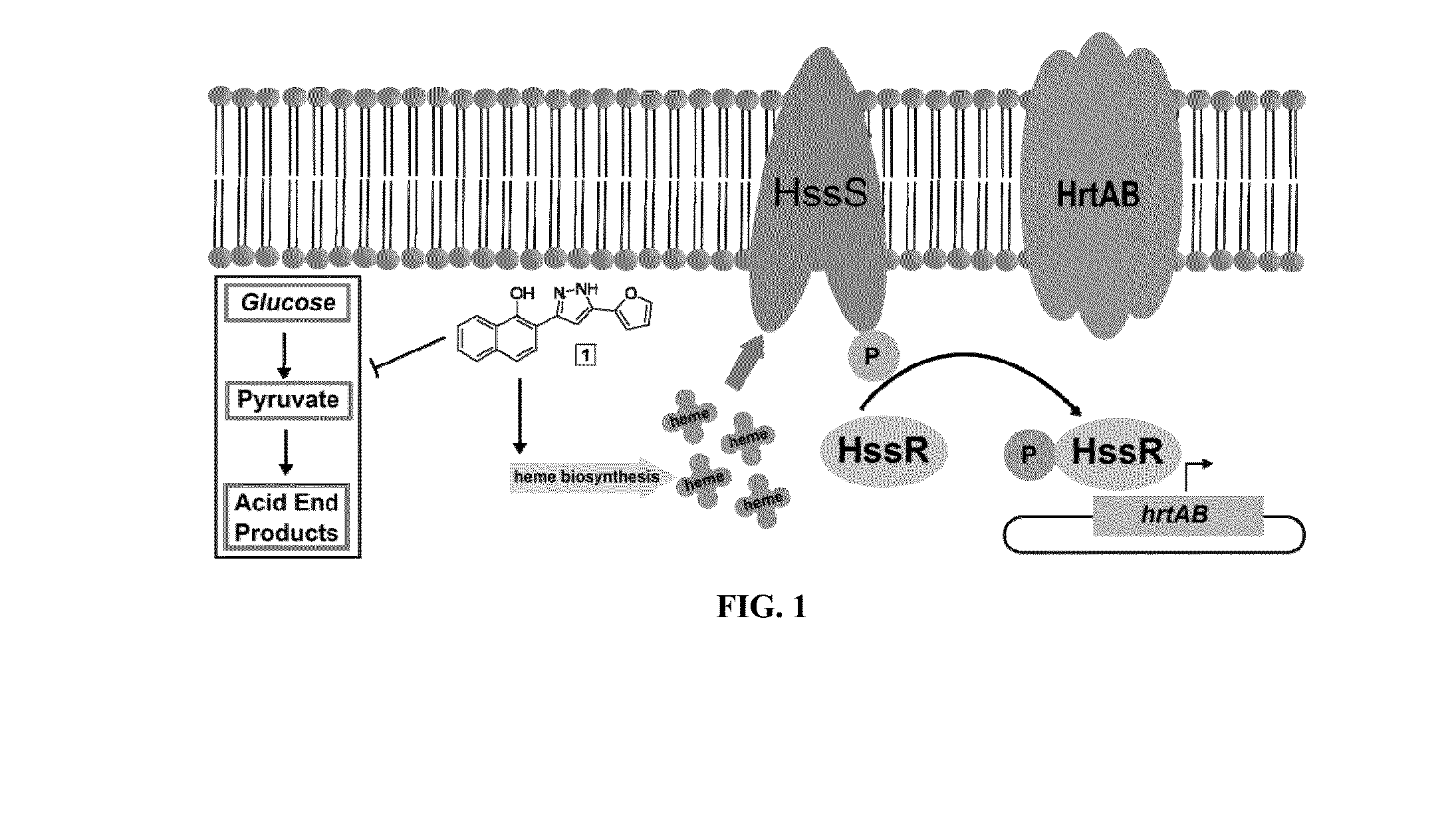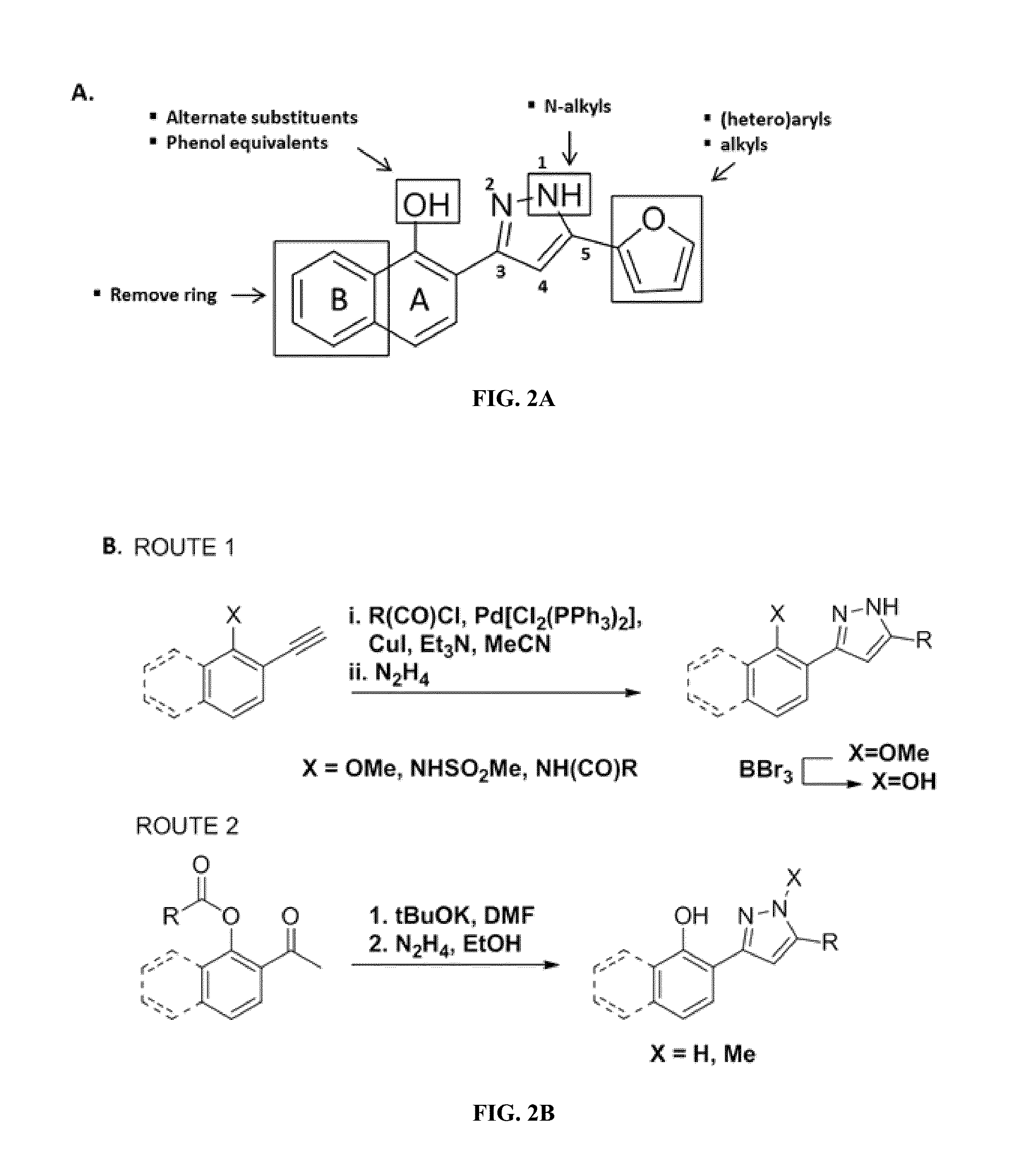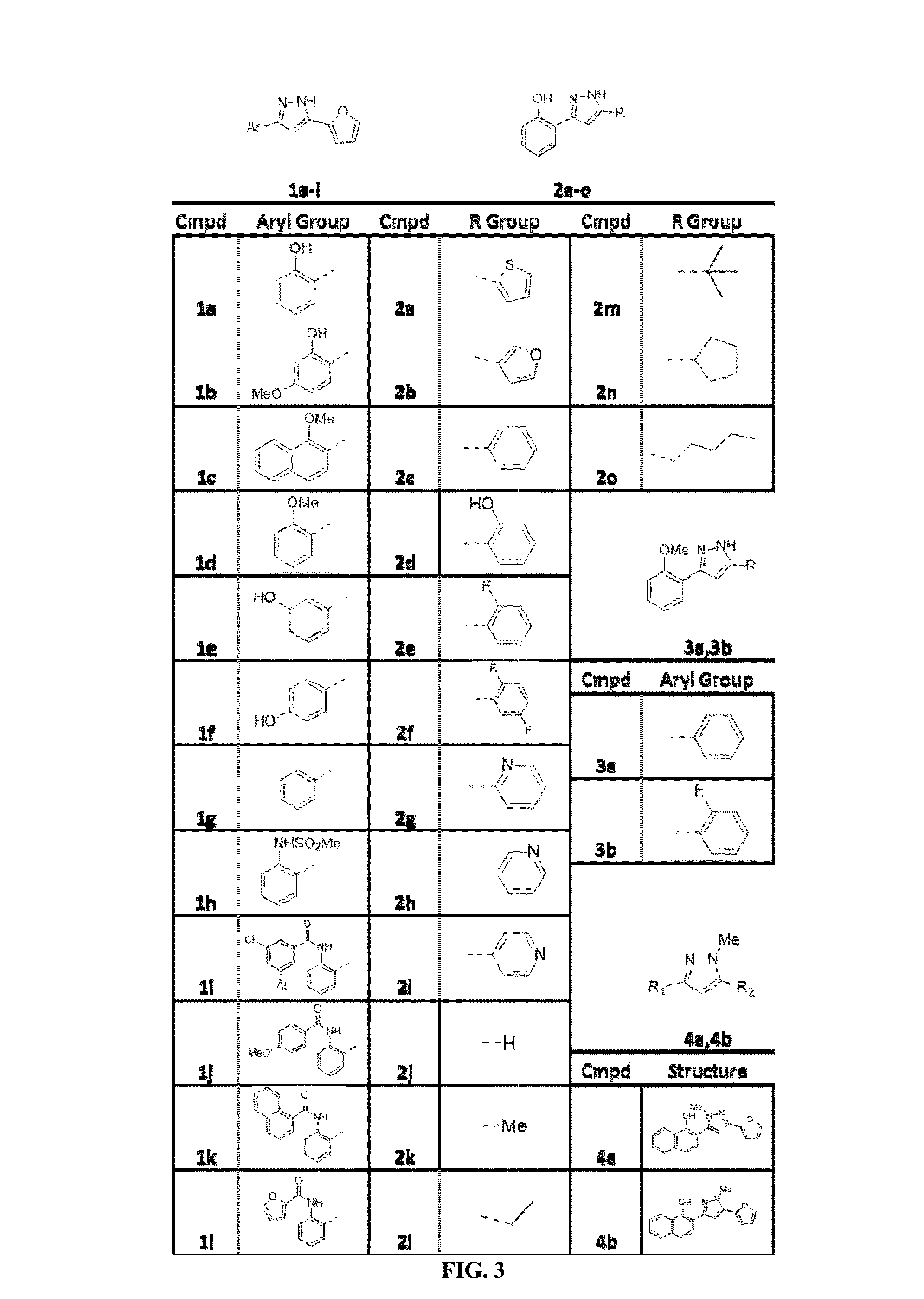Methods for use of small molecule activators of hem-y / protoporphyrinogen oxidase (PPO)
a technology of protoporphyrinogen oxidase and activator, which is applied in the field of treatment of microbial infections, can solve the problems of preventing the identification of small molecules that target pathways, increasing the threat of drug resistant strains to public health, and a tremendous threat to antimicrobials, so as to enhance the production and purification of recombinant hemoglobin and the effect of enhancing the production of recombinant hemoglobin
- Summary
- Abstract
- Description
- Claims
- Application Information
AI Technical Summary
Benefits of technology
Problems solved by technology
Method used
Image
Examples
example 1
Decoupling Activation of Heme Biosynthesis from Anaerobic Toxicity in Exemplary Compound Active in S. aureus
[0113]The present inventors developed a high throughput screen for activators of the HssRS two component system. The most active hit compound, 1, was determined to activate HssRS by increasing endogenous heme biosynthesis leading to intracellular accumulation of heme sufficient to activate HssRS but not affect overall growth.14
[0114]In the course of studying the mechanism of action of 1, it was observed to be toxic to S. aureus growing anaerobically, potentially through the inhibition of a process essential during fermentation. S. aureus is a facultative anaerobe capable of generating energy through respiration or fermentation depending on the availability of terminal electron acceptors. Fermentative growth of S. aureus is significantly inhibited by 1 compared to an untreated control or S. aureus treated with 1 under aerobic conditions.14
[0115]There are no other known repor...
example 2
System to Screen for Small Molecule Activators of HssRS and their Targets
[0210]A unique S. aureus-based screening system was created by the present inventors to study the mechanism of activation of the heme-sensing two-component system (TCS), HssRS. The unique system is useful for identifying compounds capable of activating HssRS, and for identifying the target of such compounds within the heme biosynthesis machinery, for example, small molecule targets of enzymes within the heme biosynthetic pathway.
[0211]Small molecule activators of HssRS can be identified using high-throughput screens, such as the one previously described by present inventors in Mike et al, PNAS 2013, which provides for a luminescent signal to be generated when HssRS is activated. Small molecule activators of HssRS, as well as the targets of the small molecules, can be identified using the unique S. aureus-based screening system and methods disclosed herein.
[0212]Briefly, when HssRS is stimulated, it induces expr...
example 3
Activation of HemY by Small Molecule
[0217]Sequencing of the spontaneous resistant mutants referenced in Example 2 identified a T183K mutation in HemY. Subsequent studies revealed that the 882 compound indeed activates wild type S. aureus hemY, but not the T183K point mutant of hemY, confirming hemY as the target of the 882 compound. Only a limited number (about 10-12) small molecule activators of enzymes have been previously identified, making the identification of the 882 compound as an activator of hemY a notable discovery.
[0218]Indeed, further studies have shown that 882 interacts with HemY from a variety of organisms, activating the enzyme leading to an increase in PPIX and heme synthesis. As shown in FIGS. 7-9, the 882 compound activates hemY / PPO in Bacillus subtilis and Propionibacterium acnes, as well as mammalian PPO in Homo sapiens.
[0219]Accordingly, the present inventors have discovered a small molecule activator of hemY / PPO that is active in a variety of organisms, leadi...
PUM
| Property | Measurement | Unit |
|---|---|---|
| Molar density | aaaaa | aaaaa |
| Molar density | aaaaa | aaaaa |
| Molar density | aaaaa | aaaaa |
Abstract
Description
Claims
Application Information
 Login to View More
Login to View More - R&D
- Intellectual Property
- Life Sciences
- Materials
- Tech Scout
- Unparalleled Data Quality
- Higher Quality Content
- 60% Fewer Hallucinations
Browse by: Latest US Patents, China's latest patents, Technical Efficacy Thesaurus, Application Domain, Technology Topic, Popular Technical Reports.
© 2025 PatSnap. All rights reserved.Legal|Privacy policy|Modern Slavery Act Transparency Statement|Sitemap|About US| Contact US: help@patsnap.com



